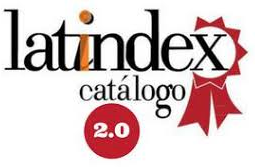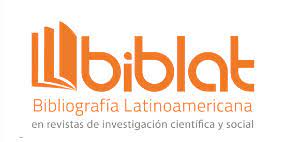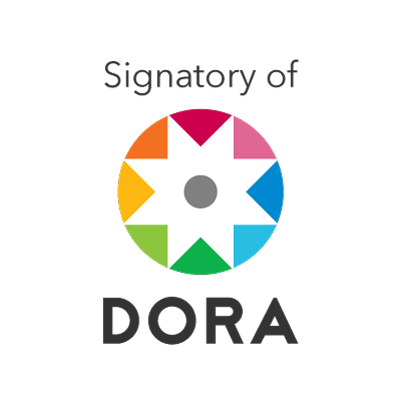Effectiveness of distance learning in higher educational institutions under martial law
DOI:
https://doi.org/10.17162/au.v13i1.1332Keywords:
Learning, distance education, martial law, communication, teaching, technology, socialization.Abstract
This study aimed to assess the effectiveness of distance learning in higher educational institutions (HEIs) under martial law. Student performance and questionnaires were analysed to determine the effectiveness of distance learning under martial law. The survey included an assessment of students' satisfaction with the educational environment and organization of learning, their motivation to study, and socialization. It was found that students' academic performance while studying under martial law changed: the number of students with Level A decreased, while the number of students with Level C increased. It was established that only 30% of students had a strong motivation to study. The study also showed that students had an insufficient climate for interpersonal communication during distance learning, lacked established feedback from the teacher; and before this it became necessary to use the feedback with the opportunity for students to express themselves, to compare their expectations of the academic subject with what teachers offer to increase the effectiveness of distance education. It was concluded that socialization was affected during distance learning.Downloads
References
Adams, A., & Toh, W. (2021). Student emotion in mediated learning: Comparing a text, video, and video game. The Electronic Journal of e-Learning, 19 (6), 575-587. https://doi.org/10.34190/ejel.19.6.2546
Akresh, R. (2016). Climate change, conflict, and children. Technical report, Households in Conflict Network Working Paper, 26 (1), 51-71.
Bazeliuk, O. V., Spirin, O. M., Petrenko, L. M., & Kalenskyi, A. A. (2018). Distance professional learning technologies. Zhytomyr: “Polissia”.
Bhagat, K. K., Wu, L. Y., & Chang, C. Y. (2019). The impact of personality on students’ perceptions towards online learning. Australasian Journal of Educational Technology, 35 (4), 98-108. https://doi.org/10.14742/ajet.4162
Campbell, L. O., Heller, S., & Pulse, L. (2022). Student-created video: an active learning approach in online environments. Interactive Learning Environments, 30 (6), 1145-1154. https://doi.org/10.1080/10494820.2020.1711777
Estebanell-Minguell, M., González-Martínez, J., Esteban-Guitart, M., & Serrat-Sellabona, E. (2021) Media profiles and transmedia learning in university students. International Journal of Learning Technology, 16 (4), 324–339. https://doi.org/10.1504/IJLT.2021.10045550
Greener, S. (2020). Attendance and attention. Interactive Learning Environments, 28 (1), 1–2. https://doi.org/10.1080/10494820.2020.1712105
Grieve, R., Kemp, N., Norris, K., & Padgett, C. R. (2017). Push or pull? Unpacking the social compensation hypothesis of Internet use in an educational context. Computers & Education, 109, 1–10. https://doi.org/10.1016/j.compedu.2017.02.008.
Guay, F., Ratelle, C. F., & Chanal, J. (2018). Optimal learning in optimal contexts: The role of self-determination in education. Canadian Psychology, 49 (3), 233–240.
Halili, S. H., & Razak, R. A. (2018). Flipped classroom approach for preschool students in learning English language. International Journal of Learning Technology, 13 (3), 203–219. https://doi.org/10.1504/IJLT.2018.10017161
Heumos, T., & Kickmeier-Rust, M. (2020). Using game-based training to reduce media induced anxiety in young children – A pilot study on the basis of a game-based app (MARTY). The Electronic Journal of e-Learning, 18 (3), 207-218. https://doi.org/10.34190/EJEL.20.18.3.001
Jati, S. S. P., Subekti, A., & Sulistyo, W. D. (2020). Development of ’Video Bank’ based on prehistoric community life at the Sangiran Site as an independent learning media. International Journal of Emerging Technologies in Learning, 15 (07), 86–97. https://doi.org/10.3991/ijet.v15i07.13257
Kaoud, H., El-Shihy, D., & Yousri, M. (2021). Online learning in Egyptian universities post COVID-19 pandemic: A student’s perspective. International Journal of Emerging Technologies in Learning, 16 (18), 38–52. https://doi.org/10.3991/ijet.v16i18.25135
Kim, N. H., So, H. J, & Joo, Y. J. (2021). Flipped learning design fidelity, self-regulated learning, satisfaction, and continuance intention in a university flipped learning course. Australasian Journal of Educational Technology, 37 (4), 1-19. https://doi.org/10.14742/ajet.6046
Kukharenko, V. M., & Bondarenko, V. V. (2020). Emergency distance learning in Ukraine. Kharkiv: Miska Drukarnia.
Lee, Y.-H., Hsieh, Y.-C., & Chen, Y.-H. (2013). An investigation of employees’ use of e-learning systems: applying the technology acceptance model. Behaviour & Information Technology, 32 (2), 173–189. https://doi.org/10.1080/0144929x.2011.577190
Lowenthal, P. R. (2022). Exploring student perceptions of asynchronous video in online courses. Distance Education, 43 (3), 369-387. https://doi.org/10.1080/01587919.2022.2088479
Luke, K. (2020). The pause/play button actor-network: Lecture capture recordings and (re)configuring multi-spatial learning practices. Interactive Learning Environments, 30 (6), 1011-1027. https://doi.org/10.1080/10494820.2019.1706052
Ministry of Education and Science of Ukraine. (2022). Education is under threat. https://saveschools.in.ua/
Namen, O., Prem, M., & Vargas, J. F. (2020). The human capital peace dividend. HiCN Working Papers, 310.
Orsini, C., Binnie, V. I., & Tricio, J. A. (2018). Motivational profiles and their relationships with basic psychological needs, academic performance, study strategies, self-esteem, and vitality in dental students in Chile. Journal of Educational Evaluation for Health Professions, 15 (11), 1–6.
Przybylski, A. K., Murayama, K., DeHaan, C. R., & Gladwell, V. (2013). Motivational, emotional, and behavioral correlates of fear of missing out. Computers in Human Behaviour, 29 (4), 1841–1848.
Roy, S., & Singh, P. (2016). Gender bias in education during conflict: Evidence from Assam. Technical report, WIDER Working Paper, wp-2016-67.
Shibani, A., Knight, S., & Shum, S. B. (2020). Educator perspectives on learning analytics in classroom practice. The Internet and Higher Education, 46, 63-82. https://doi.org/10.1016/j.iheduc.2020.100730
Shkuropat, A. V., Golovchenko, I. V., & Rudyshyn, S. D. (2021). The structure of educational motivation of high school students. Pedagogical Sciences: Theory and Practice, 3, 19-26.
Stuart, J., O’Donnell, A. W., Scott, R., O’Donnell, K., Lund, R., & Barber, B. (2022). Asynchronous and synchronous remote teaching and academic outcomes during COVID-19. Distance Education, 43 (3), 408-425. https://doi.org/10.1080/01587919.2022.2088477
Thai, N. T. T., De Wever, B., & Valcke, M. (2017). The impact of a flipped classroom design on learning performance in higher education: Looking for the best “blend” of lectures and guiding questions with feedback. Computers & Education, 107, 113–126. https://doi.org/10.1016/j.compedu.2017.01.003
Turan, Z., Kucuk, S., & Cilligol Karabey, S. (2022). The university students’ self-regulated effort, flexibility and satisfaction in distance education. International Journal of Educational Technology in Higher Education, 19, 35. https://doi.org/10.1186/s41239-022-00342-w
Wong, R. (2019). Basis psychological needs of students in blended learning. Interactive Learning Environments, 30 (6), 1–15. https://doi.org/10.1080/10494820.2019.1703010
Yang, C. C. Y., Chen, I. Y. L., Akçapınar, G., Flanagan, B., & Ogata, H. (2021). Using a Summarized Lecture Material Recommendation System to Enhance Students’ Preclass Preparation in a Flipped Classroom. Educational Technology & Society, 24 (2), 1–13.
Downloads
Published
How to Cite
Issue
Section
License
Copyright (c) 2022 Yevhenii Ishchenko, Оlena Vdovenko, Tetiana Nych, Lesia Moroz-Rekotova, Liudmyla Arystova

This work is licensed under a Creative Commons Attribution 4.0 International License.
- The authors retain their copyright but assign to the journal the right of the first publication, with the work registered under the Creative Commons attribution license, which allows third parties to use the published information as long as they mention the authorship of the work and that it was first published in this journal.
- Authors may make other independent or additional contractual arrangements for non-exclusive distribution of the version of the article published in this journal (eg, include it in an institutional repository or publish it in a book) as long as it clearly indicates that the work was first published in this journal.
- Authors are encouraged and advised to publish their work on the Internet (for example, on institutional or personal pages) before and during the review and publication process, as it can lead to productive exchanges and a greater and faster dissemination of the published work (see The Effect of Open Access).










